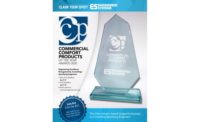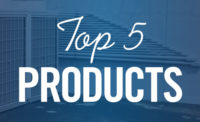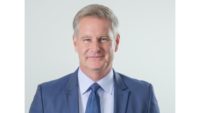MARCO ISLAND, Fla. — Daikin welcomed more than 1,300 industry partners to its 2019 Group Sales Meeting, Oct. 4-8 in Marco Island, Florida. During the event, Herb Woerpel, editor-in-chief of Engineered Systems, met with a room full of attendees to discuss industry trends, HVAC refrigerants, the feasibility of net-zero energy, and more. Here is some of that correspondence.
Engineered Systems: There is a lot of volatility surrounding the industry right now – from the lowest unemployment rates we’ve seen in decades to an ever-changing refrigerant landscape. What is your company doing to address that volatility?
Pat Lynch, vice president, CCI Mechanical, Salt Lake City, Utah: We’re dealing with manpower issues. If you can’t get people to do the work, then it’s difficult to commit to more jobs. We’re struggling to find service technicians. We’re offering a $4,000 bonus for a journeyman who joins and stays with our company, and we’re rewarding the people who refer them. This lack of workers is limiting our ability to do more work and causing us to hesitate to bid more work.
Gil Nicholas, senior account manager, CCI Mechanical: We’re dealing with the same issues in Pennsylvania. We have signing bonuses, and we’ve started an apprenticeship program for service techs. It’s tough to find skilled labor. Our goal is to get people, give them a ton of training, and help them become skilled labor. We’ll do what we have to do to keep up.
Engineered Systems: What’s causing this labor shortage? Is it a lack of awareness or interest?
Lars Hagner, vice president of mechanical service, Worth and Company, Pipersville, Pennsylvania: There’s a stigma attached to the trades. With technology and digital opportunities, students are taught to pursue four-year degrees rather than consider construction.
Nicholas: We’re in a digital world, and everyone wants to be a CEO with a corner office right out of high school. In our area, a couple of high schools have even dropped their HVAC programs. HVAC is a huge industry that’s never going away. Luckily, a number of those schools are now bringing those programs back, which is good.
George Dobrowitsky, chief estimator, Progressive Mechanical, Ferndale, Michigan: You have to fit every job with overtime, and if you don't offer people work six days a week for 10 hours each day, they're not coming to work for you. In the Detroit area, because of the downturn in the economy and now the resurgence, young workers failed to take apprentice classes. The unions were reluctant to bring on apprentices. And so we missed several years of that training, which has caused the age of the average tradesman to increase.
Engineered Systems: Switching gears to refrigerants — how does the potential phaseout of HFCs impact each of your businesses?
Trent Hunt, applied sales manager, Mechanical Products NSW, Midvale, Utah: New refrigerants means more training for our service technicians. We have to train them on the characteristics of each refrigerant and how they work. You do have to consider all that stuff when you're talking about replacements. And even design is something that needs to be considered. A lot of people in this industry have lost their expertise when it comes to dealing with refrigeration. A change in refrigerant brings a change in oils, which, many times, makes a difficult situation even worse because it’s not just the technicians; it’s the engineers, owners, etc.
Mike Shelgren, director of facilities, Owen J. Roberts School District, Pottstown, Pennsylvania: Working for a public school district, our funds are definitely limited. I have to get at least 20-25 years out of our chillers. So, a lot of thought goes into our equipment decisions. A lot of our equipment is dated and still using R-22. So, the question is: Do I hold onto these R-22 units as long as I can or switch to R-410A, which may be on its way out as well? It’s a difficult decision.
Rick Sutkiewicz, president, ThermalNetics, Auburn Hills, Michigan: I would suggest that there’s no reason to panic. There’s time. Maybe just less than a year ago, R-134A was going to be OK. There was no phaseout for -134A. So, now, with legislation in certain states taking action, that phaseout is accelerating, which is changing the landscape. Equipment with new refrigerants is being sold at a premium. Right now, there's an economic balance that comes into play.
Engineered Systems: How is sustainability impacting your business decisions?
Dobrowitsky: When you work in the design-build realm, people are concerned with energy consumption. That increasing level of concern is changing the landscape. It’s difficult for those in the industry to keep up with new technologies, because we’re being introduced to these innovations at the same time the end users are. The customers are asking us, “Should I spend money on this? Should I make this upgrade? What's our return on investment?” It's challenging, you know, to offer advice to customers and owners right now.
Sutkiewicz: You have to stay current on the new technologies and equipment. We do that by reading Engineered Systems and The ACHR NEWS, attending seminars, and connecting with the manufacturers. We then share this information with our customers through lunch-and-learns and other events. There is a high degree of interest because clients and users have concerns about saving energy and money.
Engineered Systems: What role does energy modeling have in your business?
Jeff Daniels, HVAC project manager, Cameron Engineering, Woodbury, New York: Energy modeling is very important. Over the last nine months, the company I work for has developed an energy group, and that group is valuable because it’s giving us access to new projects. We also now have somebody who can help customers select the most efficient systems. It’s another valuable option for us to offer to our clients.
Dobrowitsky: It’s becoming very important for customers to be able to track energy usage because they’re buying based on energy efficiency. It’s becoming more and more of a prerequisite for a job, especially on larger plans.
Lynch: As a contractor that approaches a lot of design-build projects, energy modeling is really important. You want to lead the customer in the right direction and help them make informed decisions about the types of systems they should be using. It's becoming more and more of a necessity on each project.
Engineered Systems: Is zero-net energy a feasible benchmark?
Daniels: We haven’t designed a zero-net energy building yet, but I just attended a seminar last week that discussed the fines that are going to be doled out for buildings that don’t meet regulations – at least in New York. So, we're going to have to get on it and make sure that we start reducing our carbon footprints. Those who opt against designing at net-zero are going to be paying a hefty fine. So, we’re all going to be faced with this sooner or later.
Dobrowitsky: A few of the questions that surround net-zero energy are: How do you monitor a building’s carbon footprint, and who's going to inflict such a fine? Maybe this is done by a third-party energy monitoring company, and they’re obviously going to be looking at your energy bills. No one is exactly sure how that’s going to happen, but we’re told it's coming soon.
When these fines are levied, building owners are going to be faced with a choice. Do they make these changes and go bankrupt or simply pay the fine? If he’s unable to pay the fines, does he close the building? Again, no one knows the answers.
Hunt: When you’re designing a project with 100% outside air, and they can’t get away from that for safety reasons, what do you do? If you throw air out, you’re not hitting net-zero. I would say office buildings and residential settings should strive for net-zero. Office buildings should also be getting on board, but, like I said, the biggest energy users are manufacturers. To me, that's the one that's going to be tough.
Nicholas: I think it's really good to set goals for net-zero, and there should be incentives to get there, but the truth is, we're a pain-generated society. Until that pain gets to where it becomes unbearable, it’s going to be difficult to make such a change.





